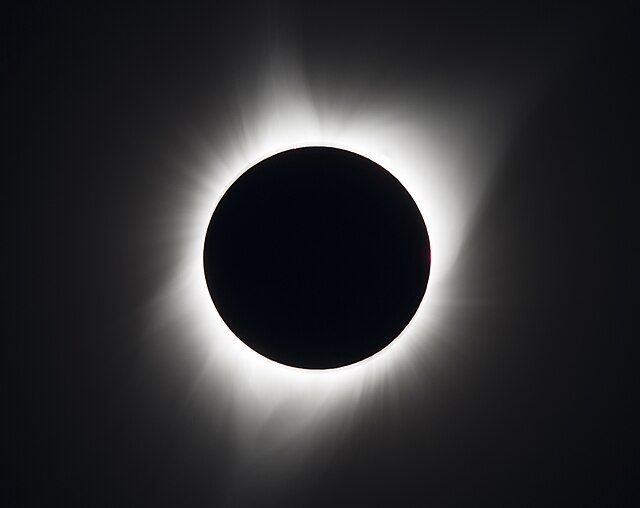The Solar System is the gravitationally bound system of the Sun and the objects that orbit it. It was formed 4.6 billion years ago when a dense region of a molecular cloud collapsed, forming the Sun and a protoplanetary disc. The Sun is an ordinary main sequence star that maintains a balanced equilibrium by the fusion of hydrogen into helium at its core, releasing this energy from its outer photosphere.
Montage of the largest bodies in the Solar System. The asteroid belt and Kuiper belt are not added because the individual asteroids are too small to be shown.
Diagram of the early Solar System's protoplanetary disk, out of which Earth and other Solar System bodies formed
A diagram depicting the habitable zone boundaries around stars, and how the boundaries are affected by star type.
The Sun in true white color
The Sun is the star at the center of the Solar System. It is a massive, hot ball of plasma, inflated and heated by energy produced by nuclear fusion reactions in its core. Part of this energy is emitted from its surface as visible light, ultraviolet, and infrared radiation, providing most of the energy for life on Earth. The Sun has been an object of veneration in many cultures. It has been a central subject for astronomical research since antiquity.
The Sun, filmed through a clear solar filter
High-resolution image of the Sun's surface taken by the Daniel K. Inouye Solar Telescope (DKIST)
The Sun's transition region taken by Hinode's Solar Optical Telescope
During a solar eclipse the solar corona can be seen with the naked eye during totality.







